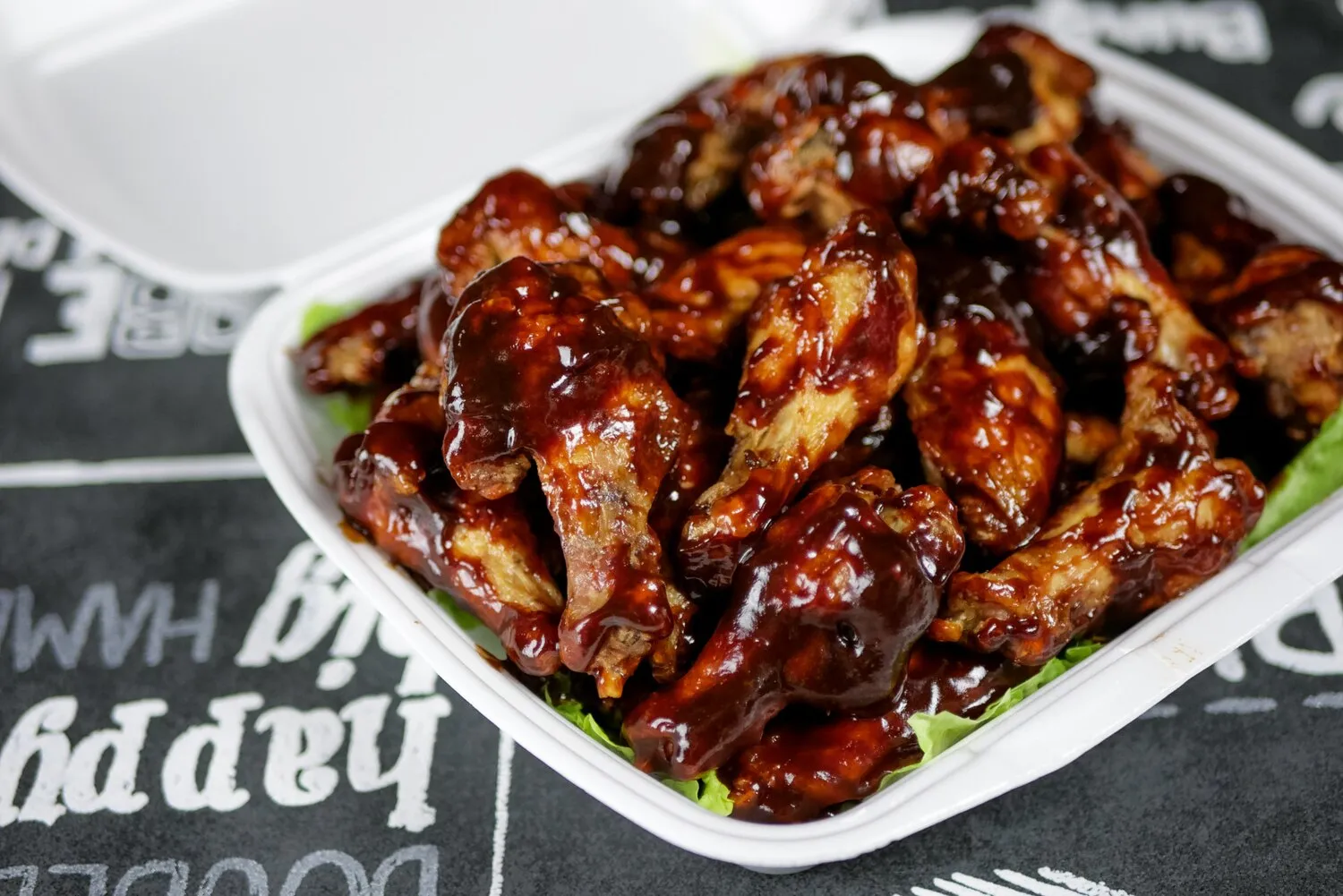
Smoked Wings
Hooters Smoked Wings are hickory smoked, then tossed in your favorite sauce.
Nutrition Facts
* The % Daily Value (DV) tells you how much a nutrient in a serving of food contributes to a daily diet. 2,000 calories a day is used for general nutrition advice.
The history of smoked wings is rooted in the American barbecue tradition, which itself is influenced by Native American smoking techniques and European meat preservation methods. The combination of dry rubs and smoking specifically gained popularity alongside the broader rise of regional barbecue styles in the US, particularly in the South.
Smoked wings are deeply embedded in American barbecue culture, frequently enjoyed at backyard cookouts, sports gatherings, and casual dining establishments. They represent a communal and celebratory food tradition.
Social Gatherings
Smoked wings are a popular party food, perfect for sharing and enjoying with friends and family at informal gatherings like Super Bowl parties, summer barbecues, and tailgates.
Regional Barbecue
They are an integral part of American regional barbecue, with different regions showcasing their own unique styles of rubs and smoking techniques influencing the overall flavor.
Competition BBQ
Smoked wings are often featured in barbecue competitions, where pitmasters showcase their skills in smoking and flavor combinations to impress judges.
Smoked wings offer a complex interplay of smoky, savory, and spicy flavors, defined by the dry rub's ingredients and the type of wood used for smoking.
The main flavor profile centers around the smoky notes imparted by the wood (e.g., hickory, apple, mesquite). The dry rub contributes savory, sweet, and spicy elements. Common ingredients in the rub include salt, pepper, paprika (sweet or smoked), garlic powder, onion powder, cayenne pepper (for heat), brown sugar (for sweetness), and herbs like oregano or thyme. The specific blend determines the overall flavor – some rubs are heavily savory, while others emphasize sweetness or heat. The smoking process further enhances the flavors by creating a caramelized crust (bark) on the wings.
Wood Selection
Choose wood based on your desired flavor profile. Hickory provides a strong, classic smoky flavor, while applewood imparts a sweeter, milder smoke. Mesquite is potent and best used sparingly. Experiment to find your favorite.
Dry Rub Application
Apply the dry rub generously and evenly, ensuring all surfaces of the wings are coated. For best results, rub the wings a few hours before smoking, or even overnight, to allow the flavors to penetrate the meat.
Temperature Control
Maintain a consistent smoking temperature (around 250-275°F) for optimal results. Use a reliable thermometer to monitor the smoker's temperature. Avoid fluctuations to ensure even cooking and prevent the wings from drying out.
Doneness
Wings are done when they reach an internal temperature of 165°F. Check the temperature using a meat thermometer inserted into the thickest part of the wing, avoiding the bone. The skin should be crispy and the meat should easily pull away from the bone.
Resting
Allow the wings to rest for 5-10 minutes after removing them from the smoker. This allows the juices to redistribute, resulting in more tender and flavorful wings.
Explore additional Chicken Wings dishes and restaurants
Explore Chicken WingsDiscover top dining spots and culinary experiences in Chesapeake.
Explore ChesapeakeLearn more about the food culture, restaurant scene, and culinary heritage of United States.
Explore United States